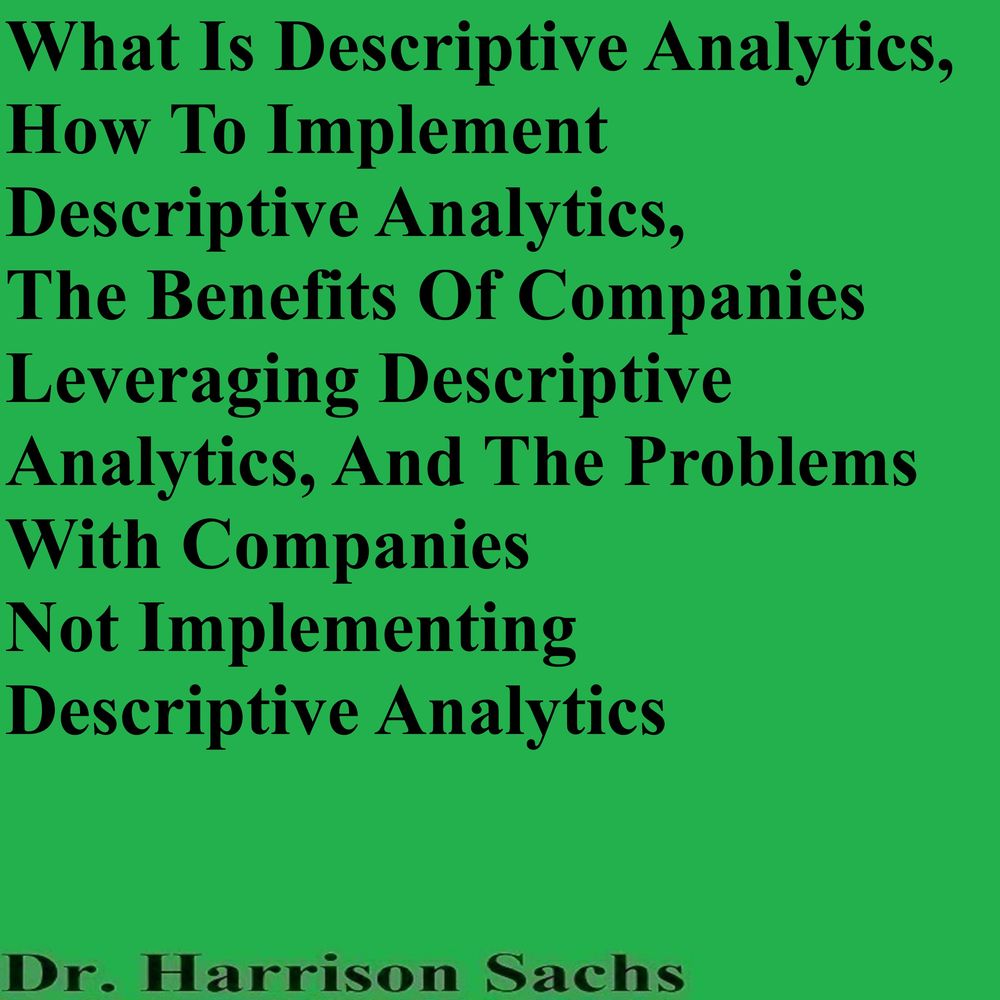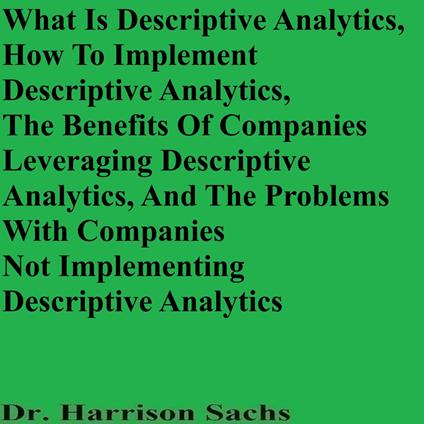What Is Descriptive Analytics, How To Implement Descriptive Analytics, The Benefits Of Companies Leveraging Descriptive Analytics, And The Problems With Companies Not Implementing Descriptive Analytics
This audiobook is narrated by a digital voice. This essay sheds light on what is descriptive analytics, demystifies how to implement descriptive analytics, delineates the benefits of companies leveraging descriptive analytics, and expounds upon the problems with companies not implementing descriptive analytics. Succinctly stated, descriptive analytics is deemed to be “a type of data analytics” that refers to the practice of harnessing “statistical techniques and data visualization techniques to summarize” historical data for data interpretation purposes. “Statistical techniques and data visualization techniques” can be leveraged to not only ascertain patterns in the historical data, but to also to track the results of key performance indicators that are derived from the historical data. Engaging in the descriptive analytics can aid researchers in being able to parse historical data. Engaging in the descriptive analytics can also aid researchers in being able to comprehensively ascertain how historical data can change over time. Data is not characterized by immutability in contexts in which changes in variable performance can precipitate changes in the data. Examples of changes in historical data disparities that can be demystified by engaging in descriptive analytics encompass the year-over-year revenue sales volume growth rate, the year-over-year revenue growth rate, the year-over-year net income growth rate, and the year-over-year market share growth rate. Researchers can engage in descriptive analytics in order to gain a comprehensive understanding of a company’s financial performance. If companies are able to glean insights into their financial performance by engaging in the descriptive analytics, then they can identify areas for improvements. Furthermore, if companies are able to discover areas for improvements, then they can research the bottlenecks in these areas for improvements and subsequently follow the requisite measures to remedy the bottlenecks in these areas for improvements.
-
Autore:
-
Durata in (hh:mm:ss):00:24:18
-
Anno edizione:2025
-
Editore:
Formato:
Gli Audiolibri venduti dal nostro sito sono in formato MP3 e protetti da un DRM proprietario Kobo.
Compatibilità:
Gli Audiolibri venduti dal nostro sito possono essere ascoltati sul tuo smartphone o tablet tramite la APP gratuita Kobo Books scaricabile da iOS o Android. Gli Audiolibri non possono essere scaricati in locale o trasferiti su un client di ascolto diverso da quello fornito tramite Kobo. Non è possibile ascoltare gli audiolibri con la Kobo APP Desktop. Puoi ascoltare gli Audiolibri tramite determinati eReader Kobo, utilizzando cuffie o casse con Bluetooth. Visita la pagina degli eReader per avere maggiori dettagli.
Cloud:
Gli Audiolibri venduti singolarmente dal nostro sito sono immediatamente sincronizzati sul tuo account personale in automatico. Successivamente all'acquisto, sono subito disponibili all'ascolto tramite i client di lettura Kobo compatibili.
Clicca qui servissero ulteriori informazioni



